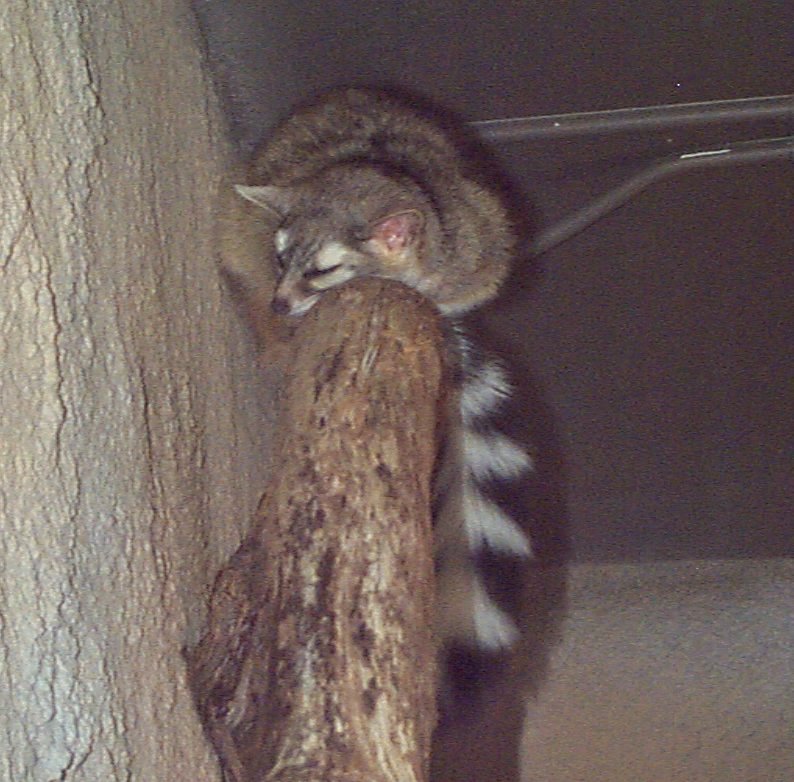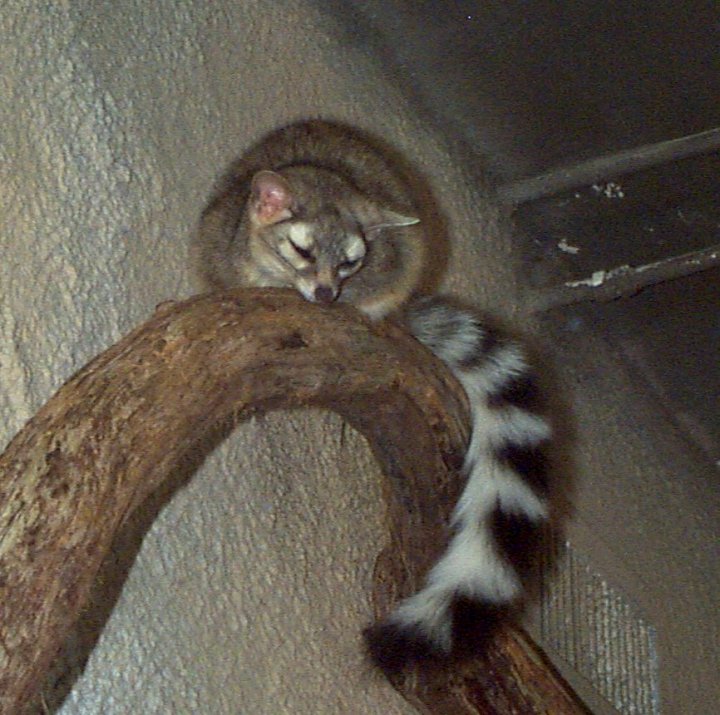Reproductive Behavior: Ringtails begin to exhibit sexual behavior at 13 weeks of age. Early spring is the beginning of their short breeding season. They attract potential mates through a high pitched barking call. The estimated gestational period for pregnant females is 45-50 days. The average litter consist of 3.3 young. The young begin reproduction the spring following their birth.
The young are born with about 2-4 to a litter. They are covered by a white hair with their ears closed and tucked near their heads. Finally, at 4 months of age, they are indistinguishable from the adults, except for having a smaller size.
Special Adaptations: Since ringtails are nocturnal creatures, they have adapted to the "night life" through night vision. The eyes of nocturnal animals are usually large. This allows more retinal surface which allows the eye to collect more light. The retina of nocturnal animals is almost totally composed of rods, which are specialized for night vision. Ringtails also have red or yellow eyeshine. Eyeshine in nocturnal animals is due to light reflected from the tapetum lucidum, a reflective membrane below the retina. At the zoo, they are rarely seen awake in the daytime.
Ringtails hunt at night, dispatching their small prey with a bite to the neck. Predators of ringtails include horned owls, bobcats, coyotes, and raccoons.

- Immanuel Kant

Melissa Childers
Email: mchilders@txwes.edu
Book Sources:
Burt, W.H. and Grossenheider, R.P.
A Field Guide to the Mammals, Third Edition, Houghton Mifflin Co., Boston
1976 pages 52-53
Schmidley, David J., Texas Mammals East of the Balcones Fault Zone, Texas A&M University Press, 1983, pages 251-255
Internet Links:
Ringtail
Data from Desert-USA Website
Ringtail
Data from Texas Parks and Wildlife
Ringtail: Mammals
of Texas
Ringtails:
E-Nature.com